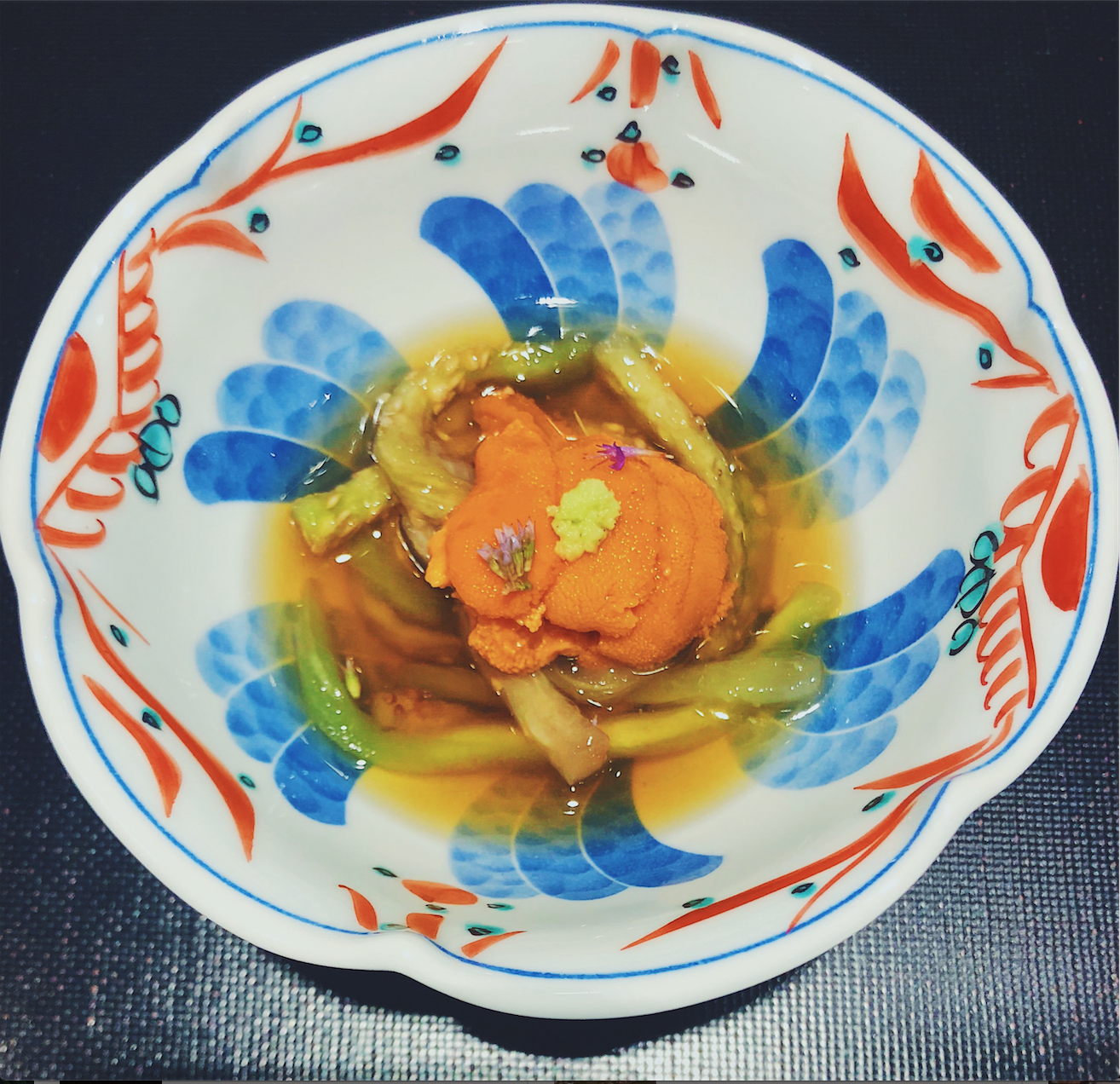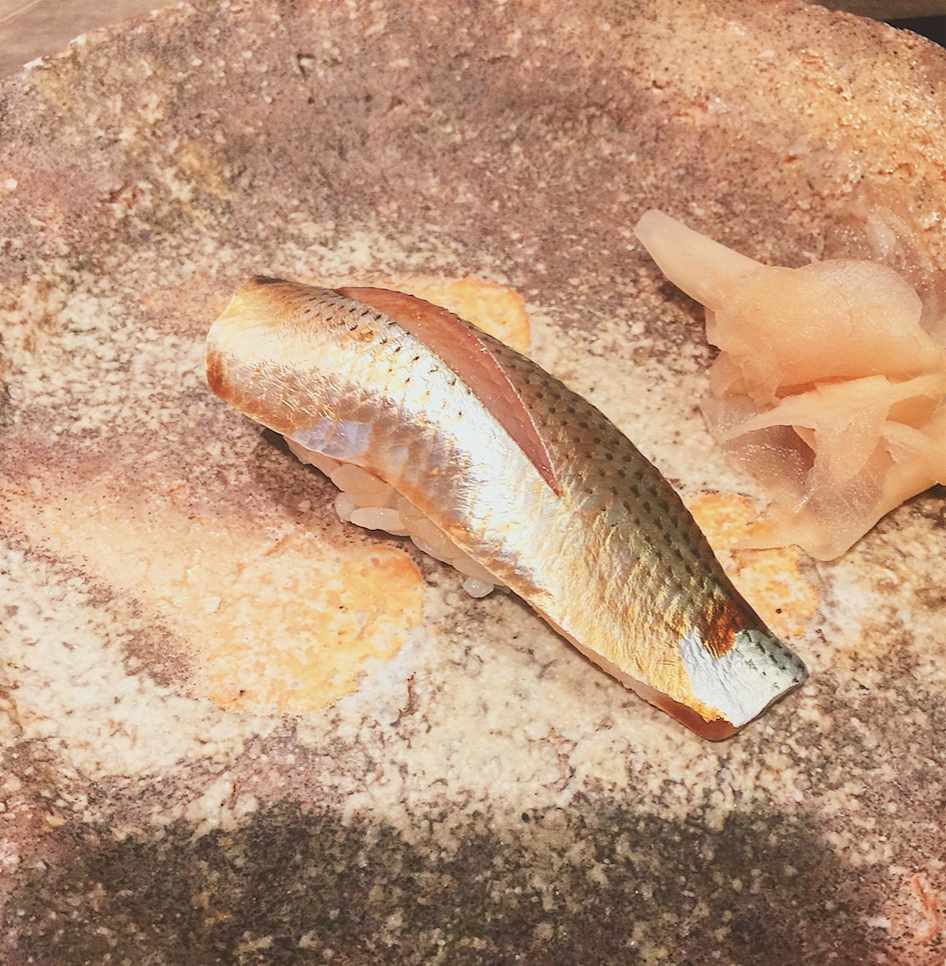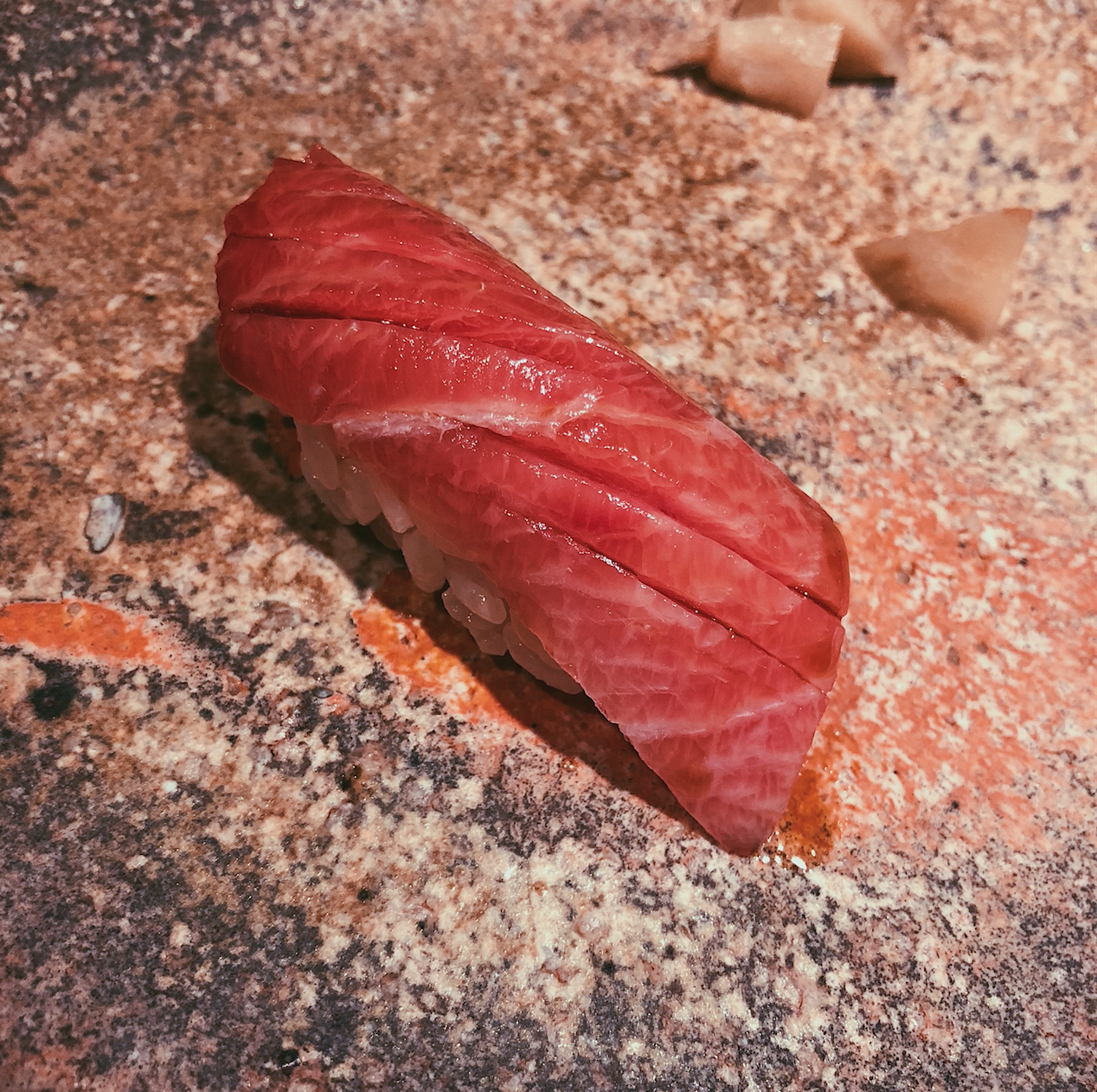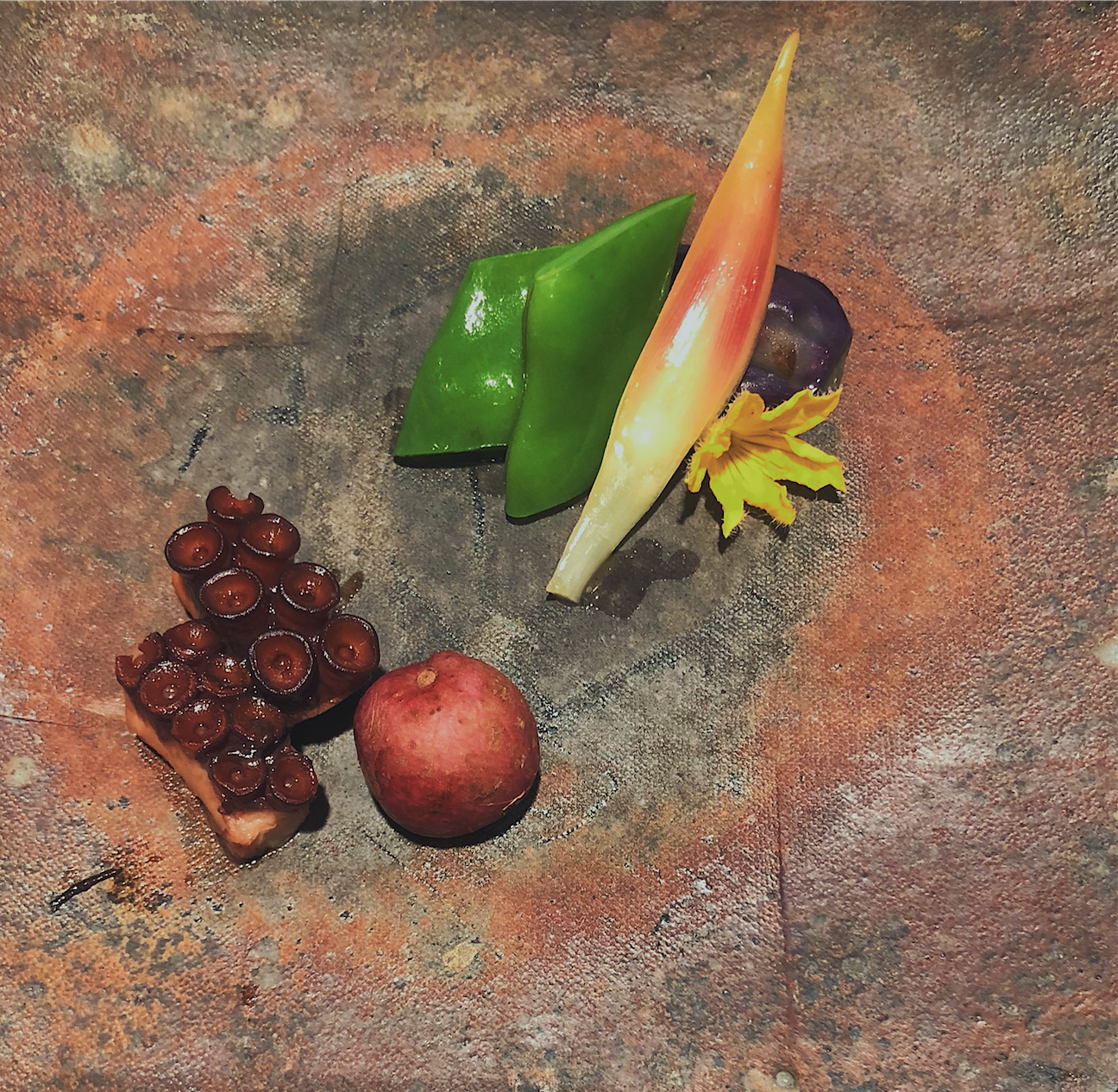Lessons Learned at Shoji
Shoji is an intimate omakase counter hidden inside the unassuming 69 Leonard Street. Beyond its door, you find perfectly crafted Edo-mae sushi and seasonally-curated kaiskei dishes coming together in harmony; and maybe that’s because the chef has dedicated most of his life to these two immeasurably technical, cultural, and gastronomic endeavors. But upon seeing the chef for the first time, you can hardly believe you are looking at a born and bred American. In this case, looks truly are deceiving: after a nearly 10-year stint at at Kikuoni Honten (the mecca of kaiseki cuisine in Kyoto, Japan), Derek Wilcox ventured to Tokyo in 2014 to learn the second of the country’s most complex food genres: sushi. After working under Toshikatsu Aoki—a second-generation proprietor at Sushi Aoki in Ginza—Wilcox had transformed himself into a curious creative and dedicated craftsman, embracing the cerebral, sophisticated, and complex art of two immaculate Japanese cuisines.
Back in the states, Wilcox’s early days at Shoji were initially dubbed a residency, implying that his one-man show be only temporary. However, owner Idan Elkon (@whoamieating) finally gave in this June and made Chef Wilcox’s (@88tamashii) position permanent, allowing him to take the restaurant’s spotlight indefinitely.
And now it has been almost two weeks since Pete Wells wrote his short and sweet, three-star review in The New York Times.When I saw the headline, I was overjoyed; But when I read the critique, I was irked. While I love Pete’s writing—the way he described the bafun uni with eggplant tendrils (see below) was both allegorical and strikingly accurate—I wanted so much more. As a critic, Pete painted a perfect picture of the Shoji experience. I agree with him on many things— about the beverage menu, that the restaurant should neverhave an empty seat, and that the sushi offerings, while brief and narrow in scope, are forgiven by the immaculate ingredient quality. Indeed, the kohada’s skin shines like a diamond and the toro’s flesh like a ruby (both fish also pictured below), literally almost too beautiful to place on your tongue shortly after being placed on your plate (good thing you can always order more a la carte).
As a result, I suggest you take a moment to read Pete’s review before continuing. In this manner I would therefore like to provide this piece as a supplement. Like most of my restaurant writing, this is not a review; if you read on, you are going to discover something much greater, such as the socio-cultural complexities I witnessed at Shoji. If you haven’t deciphered the mystery already, I’ll be blunt: Derek Wilcox is a well-educated chef specializing in two of Japan’s most iconic styles of dining; he has just earned three stars in The New York Times for his omakase experience; and he is a white, American male. Thus the question presents itself: for a man whose passions are two painstakingly technical and deeply historical genres of cuisine, is he permitted to present these dishes for consumption with authenticity? My answer is yes.



My (tasty) research of Shoji began in September of 2017. I returned in November, and came back a third time in December. I’ve also dined in February, March, and celebrated my birthday there in April. My 2018 summer expedition series culminates in a trifecta of May, July, and late August. I will finally be celebrating my 10th visit in late October or early November, when the fall ingredients of both Japan and our nation are (hopefully) at their finest. My opportunities to explore Shoji through the seasons have allowed me to experience additions of new dishes and adjustments to the old. Wilcox shows diners that he is a master of seasonality, with an attention to detail so acute that I cannot even hope to stop myself from returning over and over. Examples include switching out the first piece of nigiri—typically a firm piece of cuttlefish—for sweet and soft shiro-ika (white squid); a subtle replacement of skipjack tuna rather than bonito; and a summery miso soup tasting of sweet corn rather than a deep, rich, and enveloping red miso comforting you on a crisp autumn night.
The iterations of Shoji I have ventured through have brought my broader culinary curiosities to the forefront. Now more than ever—New Yorkers are increasingly fascinated with Asian cuisines. Just yesterday I visited the cafeteria of Manhattan’s Canal Street Market, a melting pot of flavors where one finds ramen, kakigōri (Japanese shaved ice) an izakaya stall, and bubble tea. Village Yokocho (a favorite late-night rendezvous) just off Astor Place is a hub of both Japanese and Korean cuisines, blurring points of origin but nonetheless satisfying after drinks. Shinsen Bowery sensationalizes its Japanese ingredients and culture (a focal point is definitely the neon pink light of a samurai’s silhouette ready for battle) through a showmanship that borders on excess: an Orchard Role of baked salmon with mango, crab, and cucumber; a Sashimi Salad with an arresting garlic dressing; and of course, the monster that is the Ahi Tower:
Photo curtesy of @shinsenbowery
While I am not criticizing these spaces for their approach to food, I do question what may be at stake. Let’s take Shinsen’s Tower as the example. My experience of the dish recalls Play-Doh’s well-known slogan: fun to play with, not to eat. Thus, once this rainbow of tuna, rice, crab, avocado, roe and seaweed was placed in front of me, I quickly grabbed my phone to capture this humorous seafood tower. Then, I taste. Trying to gather all its components on my fork proved a challenge all its own, but the second hurdle was attempting to decipher exactly what I had just put in my mouth. The ingredients were indistinguishable. Its overflow of flavors became a mishmash of mystery, a ball of lifeless texture. I can only offer credit to the amounts of salt, fat, and sugar covering the plate in the form of four various sauces nudging me toward my second bite. The dish thusly earned a new slogan all its own: style over substance.
When a dominant culture has the opportunity to bring a foreign terroir into our food culture, the consequence is loss. While this may not be a loss of enjoyment, it is a reduction of learning. Yes, ingredients one may define as “Japanese” may be situated on the plate, but the composition lacks a cultural relevancy that may be rooted in an understanding of history. Thus these notions of flavor, texture, presentation and taste are lost in that sea of popular culture, slowly sinking below the surface where its individual characteristics are drowned by a hegemony of complacent comfort. We sacrifice unappropriated enjoyment for the sake of a photo or a familiar, more recognizable taste. Our palate no longer develops; our mind lacks cultural competency and we are afraid to take risks in a nation whose history is built upon just that. We are a continent of immigrants, an amalgamation of peoples venturing to new land and connecting by sharing the food of our origins. As a result, it is through our food that we feel appreciated and accepted. Your existence, your history, and the things you love most are justified, culminating in a nearly unexplainable joy—the joy of sharing a meal with open minds, empty stomachs, and loving hearts.
And so, Wilcox takes the stage at Shoji as a reiteration of this notion, but with a modern relevancy of its own. No, he is not Japanese; but he understands the importance of presenting a cuisine as intended. He knows the importance of culture, history, and seasonality, and so you taste the foods of a country so very proud of its ingredients, both from Japan and North America. There are fish flown in from Japan, kaiseki dishes with produce from the tristate area (see at the end of this post: takiawase), and ocean life from the coasts of Maine or California. It is therefore this intersection of two countries that presents the diner with both the risk and the reward. You put your trust in Derek, and with great effort he delivers, never missing an opportunity to educate you or show you something new. Thus with each piece of sushi and every prepared plate, there is a chance for you to see how two distinct but synchronistic food worlds meet before your eyes and on your tongue.
I recall a dinner where he discovered my love for eel. When I returned to the restaurant a month later, he presented me with a preparation I had never experienced:
“This is called shiroyaki,” he told me, “I think you will like it.”
The dish was two pieces of grilled anago (salt-water eel), one topped with salt and wasabi, the other with a sweet, sticky and luscious eel sauce. With these slices in juxtaposition, I was able to taste new textures, flavors, and find a new appreciation for the fish as a whole, the purity of its flesh made prevalent through the tiniest sprinkle of salt and dab of wasabi. By acknowledging that I had become so accustomed to this fish brushed with that shimmering sauce, Derek managed to seize this moment and present me with something new, understanding my palate and my desire to expand upon flavors already so familiar to me. Thus, what Wilcox achieves so subtly for his diners are opportunities to take them just beyond the edge of their comfort zone, leading them one step at a time into a new world of ingredients and style. And in the end (trust me) you’ll thank him for it.
But readers, please know that I am not asking you to go out and spend nearly $300 on yourself for an evening of sushi. For a lot of us, this is not readily accessible. However, if your conceptions of sushi do not venture beyond a slice of salmon atop some rice or a crunchy rainbow roll of cucumber, crab, and avocado, then I invite you to take on a challenge. Maybe try that succulent piece of fatty unagi (freshwater eel) balanced with a brush of shimmering and sweet teriyaki sauce. Get curious and try kinmedai, a type of red snapper whose flesh strikes the perfect balance of firm and buttery soft with a gentle undercurrent of the sea. Or, if you’re feeling daring—try those slivers of uni resting comfortably on a small bed of rice and wrapped in nori seaweed—whether from Hokkaido, Santa Barbra, or Maine, the nuances of the sea urchin are vast and exciting, but you never know until you try.
Unagi
But, hey—if none of this sounds appealing to you, then please: pick up a book, listen to a podcast, or just watch Jiro Dreams of Sushi. Explore the diverse mediums of culinary creation through a lens in which you can also enrich your cultural competency: educate yourself about the path to perfect sushi rice, and your next bite will taste that much better knowing it’s the tang of vinegar that makes it so good. Or maybe simply take some time to research the critical process of ingredient selection, so you can be that much more appreciative of each passing season. I want us all to eat with an understanding of what tastes good. But I also long for a food culture where we eat with the ability to perceive the labor of its creation and the relevance of its history and environment. With this in mind, I believe that not only will be able to enhance our enjoyment of cuisines more foreign to us, but we can also create a more transparent and openly curious conversation about all the tasty things we put in our mouths. Let us all try to take a note from chef Wilcox, and take the steps to approach food with a deeper sense of authenticity, a respectful amount of innovation, and an overarching concept of simplicity.
Takaiwase: the kaiseki-style plate of simmered vegetables (ginger shoot, Japanese eggplant, potato and—in this case—sno peas from PA), accompanied here with two delectable pieces of octopus.



